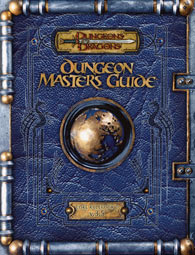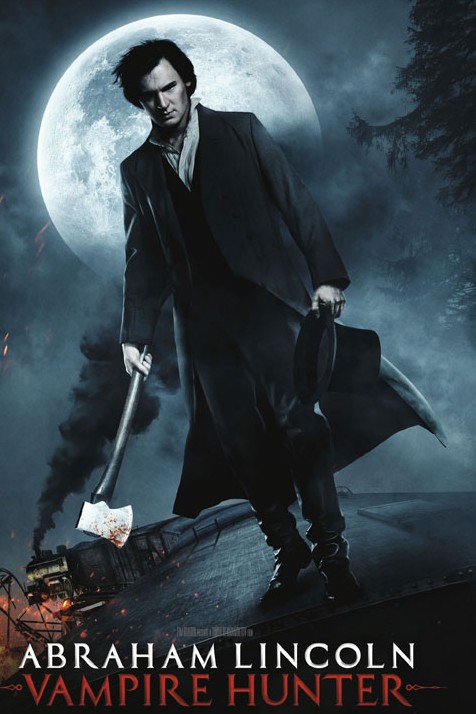 The ABCs of GMing
The ABCs of GMing
The ABCs of GMing is an ongoing series about the different skills and ideas needed to run a successful tabletop game.
Creativity
Tabletop games, like any other game, need to be interesting. Every tabletop has its own setting, full of races, classes, weapons, cities, worlds, spells, and all sorts of other goodies that shape and mold it into its own universe. This is the key to generating a creative tabletop experience. Every game setting is a full universe, and within that universe are tons of people, creatures, and everything else that helps to define that world. There is no doubt that running a thorough tabletop game takes a certain skill set to achieve, and there are simple ideas and tools you can use to ensure your players are getting more than simply what’s in the core book.
Know Your (Knowledge of the) Setting

Chances are you’ll end up with some books like these, and several shelves more of others just like it.
To start, research your source material. It’s not expected that a GM know everything about the system they’re running a game in. Take a look at Dungeon & Dragons v3.5, for instance. That system had 65 books. Sixty. Five. That’s a lot of content. But fear not; you’re not expected to know all of it. Even if you have a Collector in your group, it’s a safe bet that they can’t recite every prestige class or major artifact within the 3.5 universe. Therefore, keep it in the back of your mind that you don’t have to have an encyclopedic knowledge of your game.
That being said, make sure you know the part of the game you’ll be running. For example, if you’re running a campaign that uses a modern setting and choose the game to be in the city of Chicago, make sure you have plenty of material for the players to use in the city. Modern settings can be the easiest to use, as street maps and statistics are publicly available. If you’re running a game in a fantasy setting, chances are any city you choose will have some information listed in a supplement book. Work to know your own setting first, and it’ll be much easier to grow your creative ideas from that setting.
Reward Creativity from Your Players
As important as it is to give your game a detailed background, it’s also important that your players contribute to that atmosphere. A common GM trick is to award players with extra XP/karma/skill points for a well-developed character with back story, motives, and desires. Even if players are utilizing some avatar of themselves, it’s important that they document these character attributes to help keep their characters focused. This may take some assistance from the GM.
As the GM, you should be the one with some of the most knowledge on the setting and rules of the game. Make yourself available to your players as they are creating their characters. A key part of character development is to make sure it’s reflected on their character sheets as well as in the player’s minds. The whole point of developing a back story is to make sure it’s depicted in their character’s game play. If a back story makes note of a formal education, for example, make sure the player’s character has the appropriate skills and attributes that would show that. Remember, you’ll be one of the people your players rely on for knowledge of the system. It’s important that you are able to assist your players to be as detailed and creative with their PCs as you are with your world building.
Don’t Let The Setting Restrict You
While I’m not suggesting that you insert robots into your Dark Sun campaign, remember that it’s still your world. There’s plenty of room for adaptation to make things better fit your campaign. Want to add more variety to your vampires in Shadowrun? Borrow some elements from White Wolf and give them bloodlines and covenants. Can’t find the right monster for your dungeon in the Bestiary? Find the next closest thing and make some changes. Don’t let the setting restrict your creativity, but at the same time, make sure to keep it balanced. If you need to adapt statistics and abilities in your games from other systems, make sure you have a quality understanding of the rules that cover those changes. The last thing you want to do is accidentally make an overpowered monster or antagonist; that only leads to problems.
It’s Not Just Your Game; It’s Your Players’ Game Too
Running a game with your own characters, environment, and storyline is exciting. I can’t speak high enough volumes about the experience that is being a GM. You must always remember, though, that’s there’s more to a game simply than your world vision. You also have a table of players there to have this fun with you, and they wouldn’t be there if they weren’t interested in playing. This is where your creativity and adaptability traits have to merge together. If you’re doing everything you can to get your game off and running, make sure you get to know your characters and their storylines.
Having all of that information at your disposal is a huge benefit towards incorporating those player portions into your overall plot. To you, it may simply be your world and your players are just living in it, but without them your world isn’t much of anything beyond some well-researched make-believe. The bloodline of your campaign runs through each and every one of your players, and their happiness is just as important as yours. Take their stories and backgrounds that they worked so hard on, and incorporate them into your larger picture. If that means you have to make some changes in your game, so be it. Tabletop RPGs are a social group setting, so it’s imperative that everyone has the same opportunities to be a part of the fun.
Next time, I’ll be talking about Dedication, and how running a game takes more than just the time spent with your players. In the meantime, feel free to tell us about your own really creative stories on our forums!


